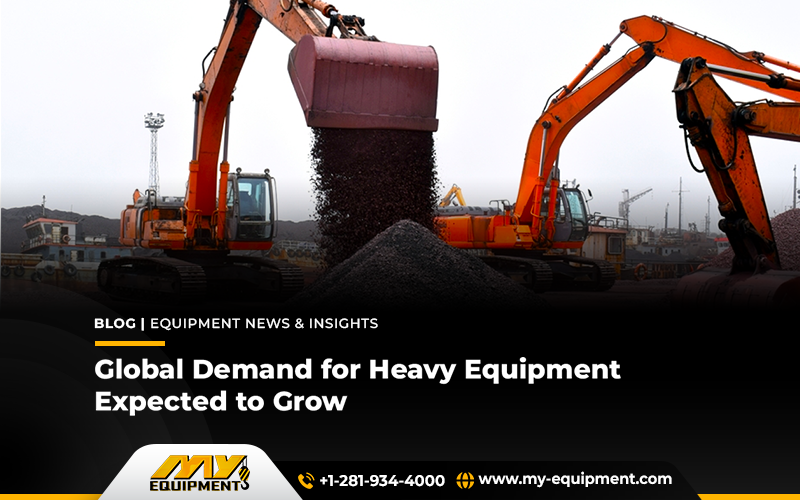The global demand for heavy construction equipment is set to grow with urbanization in the developing world being the key driving factor. This has been suggested in a report on the “Global Heavy Construction Equipment Market” conducted by Verified Market Research. This article will examine the changes that will occur due to the increase in demand for heavy equipment used in the construction industry and its possible implications.
Having discussed the importance of the heavy equipment industry, this sector is expected to witness growth at an annual CAGR of 6.81% from the current year till 2031. This means that the overall heavy construction equipment market is set to grow at high rates. From its expected value of more than 140 billion dollars in 2024, it may witness growth to more than 253 billion dollars by the time 2031 ends.
Key factors boosting the demand for heavy equipment
As mentioned above, urbanization is the key driving factor fueling the demand for heavy equipment. Among other factors that are fueling the demand for heavy construction equipment are the increased infrastructure spending and the increase in demand to adopt fuel-efficient technology that boosts the capabilities of construction operations.
With cities expanding all over the world and urbanization growth increasing, there is always a growing need to boost robust infrastructure. This in turn fuels the demand for heavy equipment machinery with advanced technology in a bid to fulfill the infrastructure requirements. Overall, the growing urbanization tends to increase construction-related activities. This results in the growing sales of heavy construction equipment.
Why advanced heavy construction equipment is greatly valued?
The primary reasons why heavy construction equipment boosts construction operations are the decrease in labor costs, efficient tracking of the construction work during all stages, and lowering of the operating costs. Overall, it tends to ensure the completion of the construction process in a timely manner and within the budget limits. Hence, it is easy to understand the forecast made for the heavy equipment industry in the future.
It is important to note here that construction companies are improving the results by upgrading the latest technology in their construction operations. Other factors that play an important role in boosting the demand are the enhanced capabilities of the advanced equipment to ease the workload on construction workers and also address the environmental concerns expressed by the concerned organizations.
Increased investment by governments and the private sector
Investment in the heavy equipment industry is not weak by any means. This is because governments around the world continue to make huge investments in public works, energy needs, and the transportation sector. This means the heavy construction equipment industry is never short of opportunities and investment to ensure robust market expansion.
Another factor that is contributing to the increase in demand is investment by private sectors not just in the US but globally. These investments are being made to construct new residential and commercial buildings. There is also an increased spending on the public infrastructure. This helps ensure the construction industry’s expansion. Increasing urbanization is also being witnessed all over the world boosting the demand for residential infrastructure. Hence, the heavy construction equipment market will continue to witness growth.
It is worth mentioning that investment in infrastructure and commercial and residential buildings is all set to keep increasing in developing nations like China and India in the coming years.
The cost and impact of environmental regulations on the demand
In this regard, it is also important to note that stringent environmental regulations have been imposed in various parts of the world. This will prove to be challenging to the sector since this may require the approval of substantial capital that is required to acquire such sophisticated machinery. This will likely put a limit on the demand to increasingly adopt innovative technology and automation.
However, adhering to environmental regulations may be inevitable as required by the law. This will likely result in costly upgrades and other technological modifications which will put a strain on the budget. This will then bring about a decrease in profit margin for the manufacturers. Manufacturers will find their operational costs increasing as calls to go green keep growing with time.
Nevertheless, it is still imperative to consider that these regulatory compliances are not just essential for legal requirements alone. They have now become an integral part of the sustainable business practices that help construction companies grow.
Complying with these regulatory regulations has become essential for companies on account of the goodwill and reputation of the companies. With growing calls to go green, failure to comply with these environmental regulations will cause reputational damage and lead to hefty fines. In some cases, it may eventually lead to operational shutdown. Hence, compliance becomes necessary even if it increases the operational costs for manufacturers.


 1400 Broadfield Blvd, Houston, TX 77084,
USA.
1400 Broadfield Blvd, Houston, TX 77084,
USA.